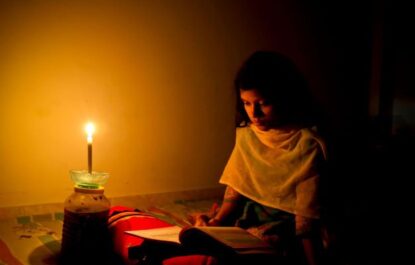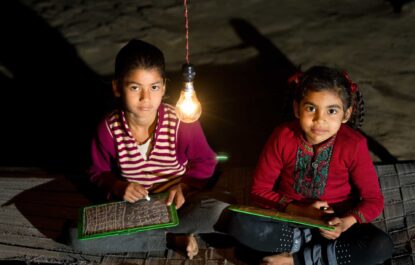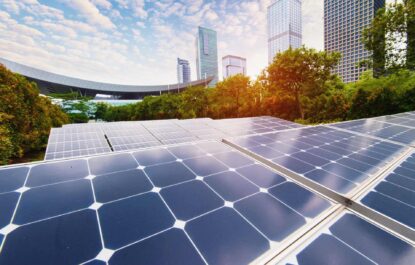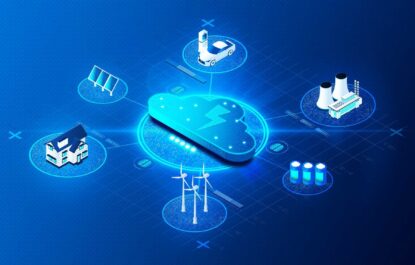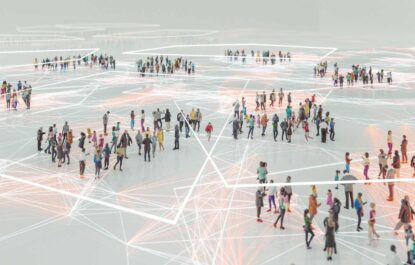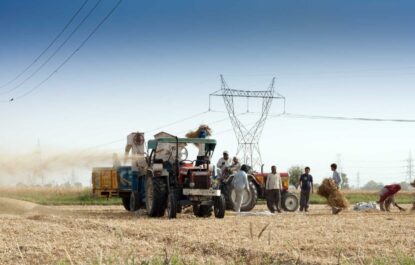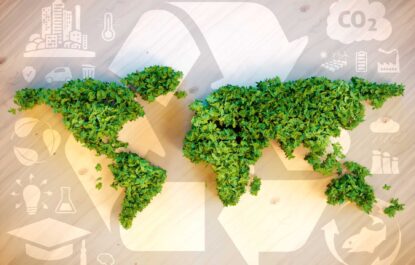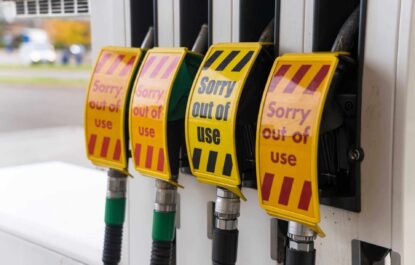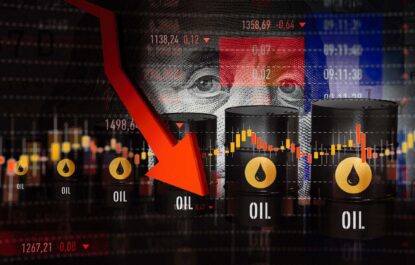Currently, the installed capacity stands at 158.12 GW, with 8.2 GW added this year. Installed solar power capacity has increased 18 times since 2014, touching 49.3 GW.
A potential capacity of 363 GW and new renewables-focused government policies have attracted several private companies. Ayana Renewable Power Pvt. Ltd., Creduce Technologies – HCPL JV, Husk Power Systems, Tata Power, Adani Green Energy, and Reliance New Energy Solar Limited are some of the major investors in India.
India is at the forefront of the renewable revolution and will become a lucrative investment destination for major players worldwide.
What is the difference between green, clean, and renewable energy?
The movement to replace fossil fuels with sustainable energy is gaining traction, but it’s essential to understand the potential impact of each energy source on the Earth. And to decipher that, we must learn the difference between green, clean, and renewable energy sources. Even though they sound similar and are used interchangeably, there are some key differences.
Renewable energy
Renewable energy is generated from sources that can be replenished quickly or never run out. The most common ones are wind and solar, and other forms can include geothermal, hydro, biomass, and tidal energy.
Green energy
Green energy, though renewable, focuses more on causing the least environmental impact. These forms of energy have also been known to reverse environmental impact. Solar, wind, and geothermal energy fall under this category. Small-scale hydropower plants can also come in this category.
Clean energy
Simply put, clean energy sources release minimal or zero carbon emissions. Fossil fuel generates greenhouse gases that cause global warming and pollution, while clean energy sources don’t. Nuclear, biomass, solar, and wind come under this category. Large-scale hydro plants also generate clean energy.
Even though hydropower produces clean energy with zero carbon emissions, they’re not necessarily green because of its negative impact on the surrounding biodiversity. Similarly, biogas plants, while green and clean, may not always be readily renewable. Considering all these factors, solar and wind energy are the best choices as they are green, clean, and renewable.
Advantages of renewable energy sources:
-
- They will never run out
Fossil fuels are mined from the depths of the Earth. They’re a limited resource, and we risk running out of coal, oil, and gas within the century. Moreover, as deposits get depleted, we need to mine deeper to meet our demands, requiring extensive machinery, pipelines, and other tertiary technologies. On the other hand, wind and solar renewables will never run out.
-
- They will only become affordable
In the past decade, solar energy prices have dropped from Rs. 12 per kWh to Rs. 2.5 per kWh. Rapid solar and wind technology advancements, cheaper components, and supply chain efficiencies have made it cost-competitive compared to fossil fuels. These energy prices will go down further as decentralization and P2P trading become the norm.
-
- Zero carbon emissions
The Paris accord binds nations to reduce their carbon footprints. Unlike fossil fuels that release around 2.2 pounds of CO2 for every kWh of electricity, renewables emit none. The world needs to work together to bring down global temperatures and curb global warming; adopting renewables is the first step.
Disadvantages of renewable energy sources
-
-
- Higher upfront investments
-
Even though renewables can aid in long-term savings, the initial investment can be prohibitive. Even residential rooftop solar panels can be too expensive for most people to afford. Solar parks, wind farms, and other large-scale renewable projects don’t just require capital but also land and electrical infrastructure.
On the plus side, conducive policies, subsidies, and tax breaks from the government have reduced these upfront costs.
-
-
- Energy storage technology has not yet matured
-
Variable renewables might be unreliable due to their dependence on unpredictable environmental factors; energy storage technology must improve to build a consistent, reliable, and resilient energy supply. There have been some promising results in this regard. For instance, Tesla’s big battery in South Australia has helped locals save up while eliminating blackouts and voltage fluctuations.
India set the ambitious goal of installing 175 GW of renewable capacity by the end of 2022 while pledging to increase total renewable capacity to 500 GW by 2030. The government plans to generate half its power requirements from renewable sources by 2030. This requires a total investment of US$ 223 billion, says a BloombergNEF report.
Currently, the installed capacity stands at 158.12 GW, with 8.2 GW added this year. Installed solar power capacity has increased 18 times since 2014, touching 49.3 GW.
A potential capacity of 363 GW and new renewables-focused government policies have attracted several private companies. Ayana Renewable Power Pvt. Ltd., Creduce Technologies – HCPL JV, Husk Power Systems, Tata Power, Adani Green Energy, and Reliance New Energy Solar Limited are some of the major investors in India.
India is at the forefront of the renewable revolution and will become a lucrative investment destination for major players worldwide.
What is the difference between green, clean, and renewable energy?
The movement to replace fossil fuels with sustainable energy is gaining traction, but it’s essential to understand the potential impact of each energy source on the Earth. And to decipher that, we must learn the difference between green, clean, and renewable energy sources. Even though they sound similar and are used interchangeably, there are some key differences.
Renewable energy
Renewable energy is generated from sources that can be replenished quickly or never run out. The most common ones are wind and solar, and other forms can include geothermal, hydro, biomass, and tidal energy.
Green energy
Green energy, though renewable, focuses more on causing the least environmental impact. These forms of energy have also been known to reverse environmental impact. Solar, wind, and geothermal energy fall under this category. Small-scale hydropower plants can also come in this category.
Clean energy
Simply put, clean energy sources release minimal or zero carbon emissions. Fossil fuel generates greenhouse gases that cause global warming and pollution, while clean energy sources don’t. Nuclear, biomass, solar, and wind come under this category. Large-scale hydro plants also generate clean energy.
Even though hydropower produces clean energy with zero carbon emissions, they’re not necessarily green because of its negative impact on the surrounding biodiversity. Similarly, biogas plants, while green and clean, may not always be readily renewable. Considering all these factors, solar and wind energy are the best choices as they are green, clean, and renewable.
Advantages of renewable energy sources:
-
-
- They will never run out
-
Fossil fuels are mined from the depths of the Earth. They’re a limited resource, and we risk running out of coal, oil, and gas within the century. Moreover, as deposits get depleted, we need to mine deeper to meet our demands, requiring extensive machinery, pipelines, and other tertiary technologies. On the other hand, wind and solar renewables will never run out.
-
-
- They will only become affordable
-
In the past decade, solar energy prices have dropped from Rs. 12 per kWh to Rs. 2.5 per kWh. Rapid solar and wind technology advancements, cheaper components, and supply chain efficiencies have made it cost-competitive compared to fossil fuels. These energy prices will go down further as decentralization and P2P trading become the norm.
-
-
- Zero carbon emissions
-
The Paris accord binds nations to reduce their carbon footprints. Unlike fossil fuels that release around 2.2 pounds of CO2 for every kWh of electricity, renewables emit none. The world needs to work together to bring down global temperatures and curb global warming; adopting renewables is the first step.
Disadvantages of renewable energy sources
-
-
- Higher upfront investments
-
Even though renewables can aid in long-term savings, the initial investment can be prohibitive. Even residential rooftop solar panels can be too expensive for most people to afford. Solar parks, wind farms, and other large-scale renewable projects don’t just require capital but also land and electrical infrastructure.
On the plus side, conducive policies, subsidies, and tax breaks from the government have reduced these upfront costs.
-
-
- Energy storage technology has not yet matured
-
Variable renewables might be unreliable due to their dependence on unpredictable environmental factors; energy storage technology must improve to build a consistent, reliable, and resilient energy supply. There have been some promising results in this regard. For instance, Tesla’s big battery in South Australia has helped locals save up while eliminating blackouts and voltage fluctuations.
Despite its limitations, renewables are on the path to powering the entire country one day. Powered by AI, big data, and blockchain, they are becoming cheaper and much more accessible for stakeholders.
Despite its limitations, renewables are on the path to powering the entire country one day. Powered by AI, big data, and blockchain, they are becoming cheaper and much more accessible for stakeholders.




